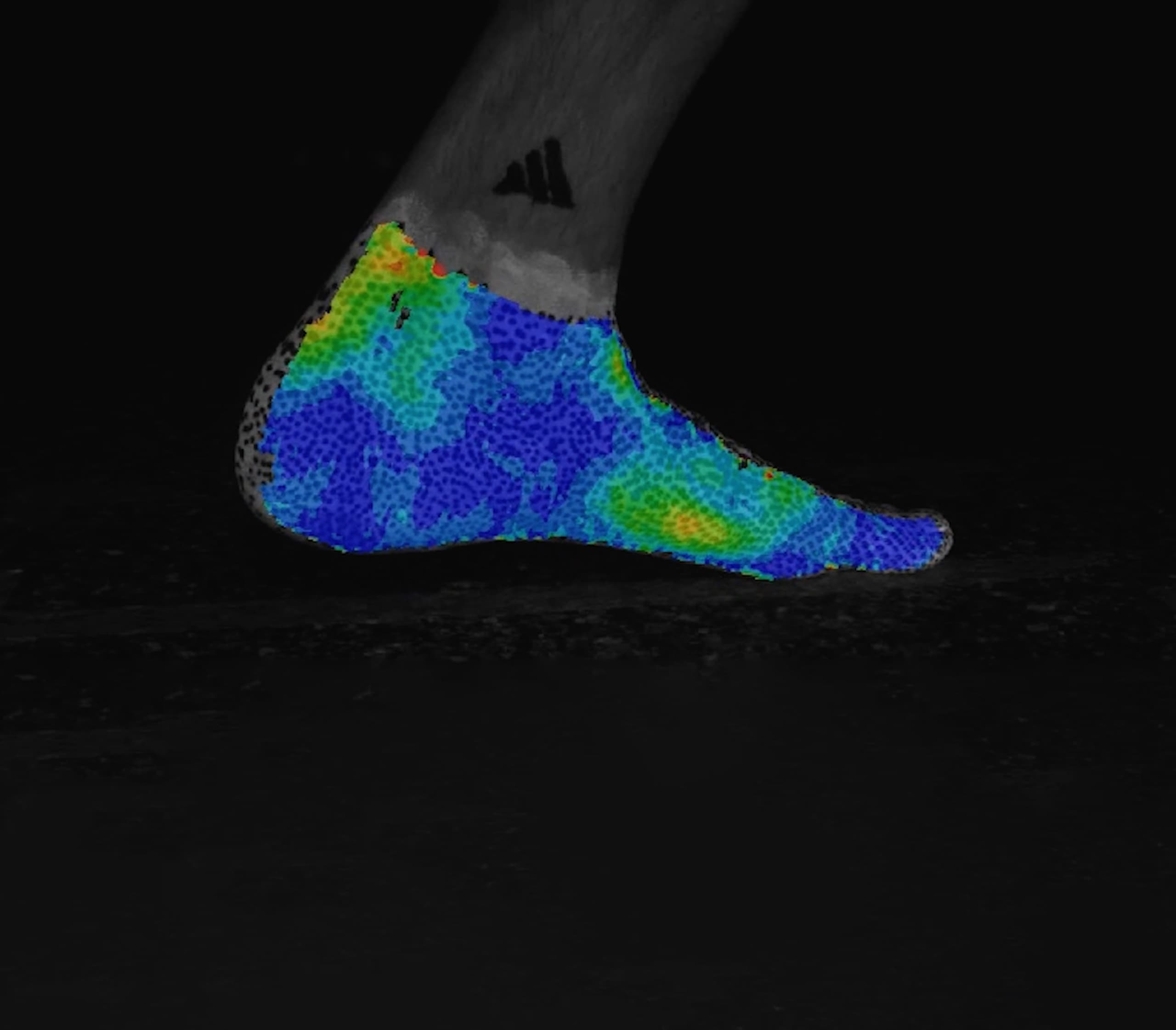Winning
it's all about teamwork
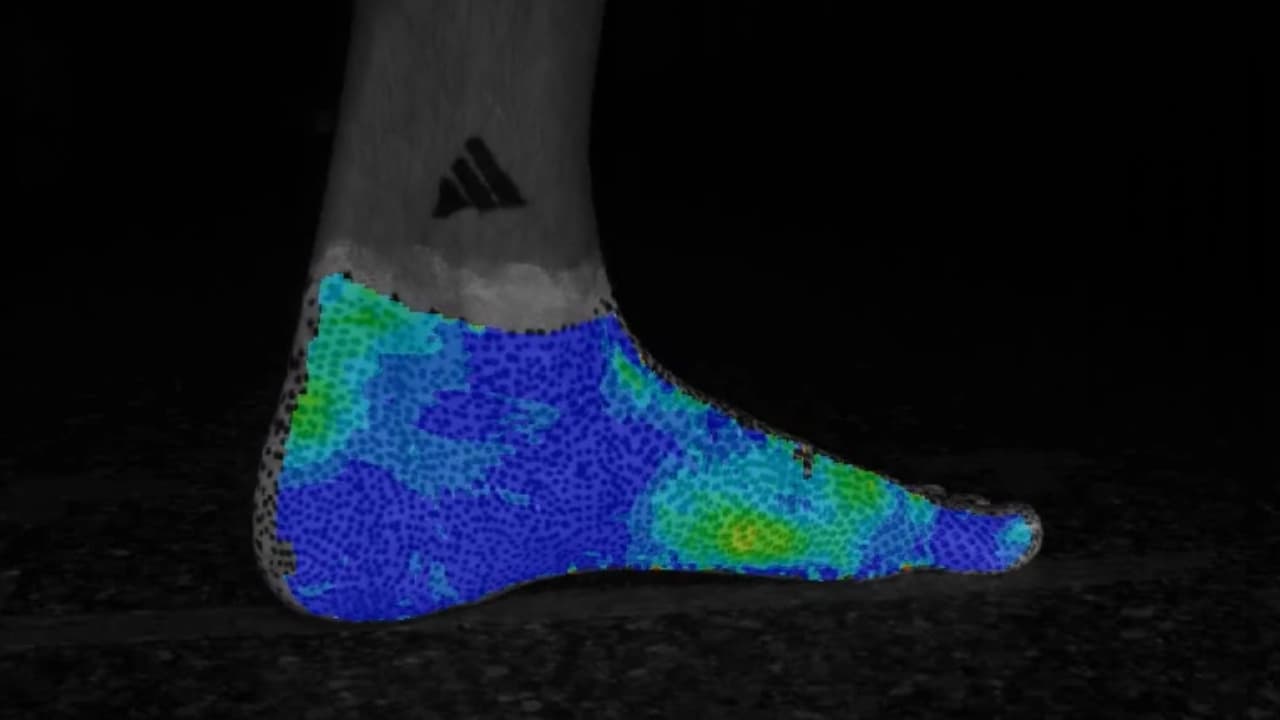
In partnership with adidas, our researchers are revolutionising sports clothing and equipment – making them safer and more inclusive while supporting talented athletes to achieve world-class success.
The global sports market is colossal – and ever growing.
Forbes estimates that it was worth $354 billion (≈£284 billion) in 2021, and that it’s likely to exceed $700 billion (≈£562 billion) in 2026. The sports technology industry alone contributes £39 billion to the UK economy.
To compete within this fast-moving and lucrative space, sports clothing and equipment brands must respond rapidly to ever-changing global markets and fashion trends.
At the start of this millennium, Sports Engineering was in its infancy. Partnerships between sports brands and academic sports engineers were rare and few brands undertook much in-house research and development.
Things have changed dramatically during the past 20 years.
These days, new sports apparel and kit are the result of intensive research and innovation – as brands strive for ever greater product performance to meet demand from elite and grassroots athletes alike.
The University’s long-standing and ongoing partnership with adidas exemplifies this evolution and, in many respects, has been at the vanguard of it.
adidas and Loughborough
a winning team
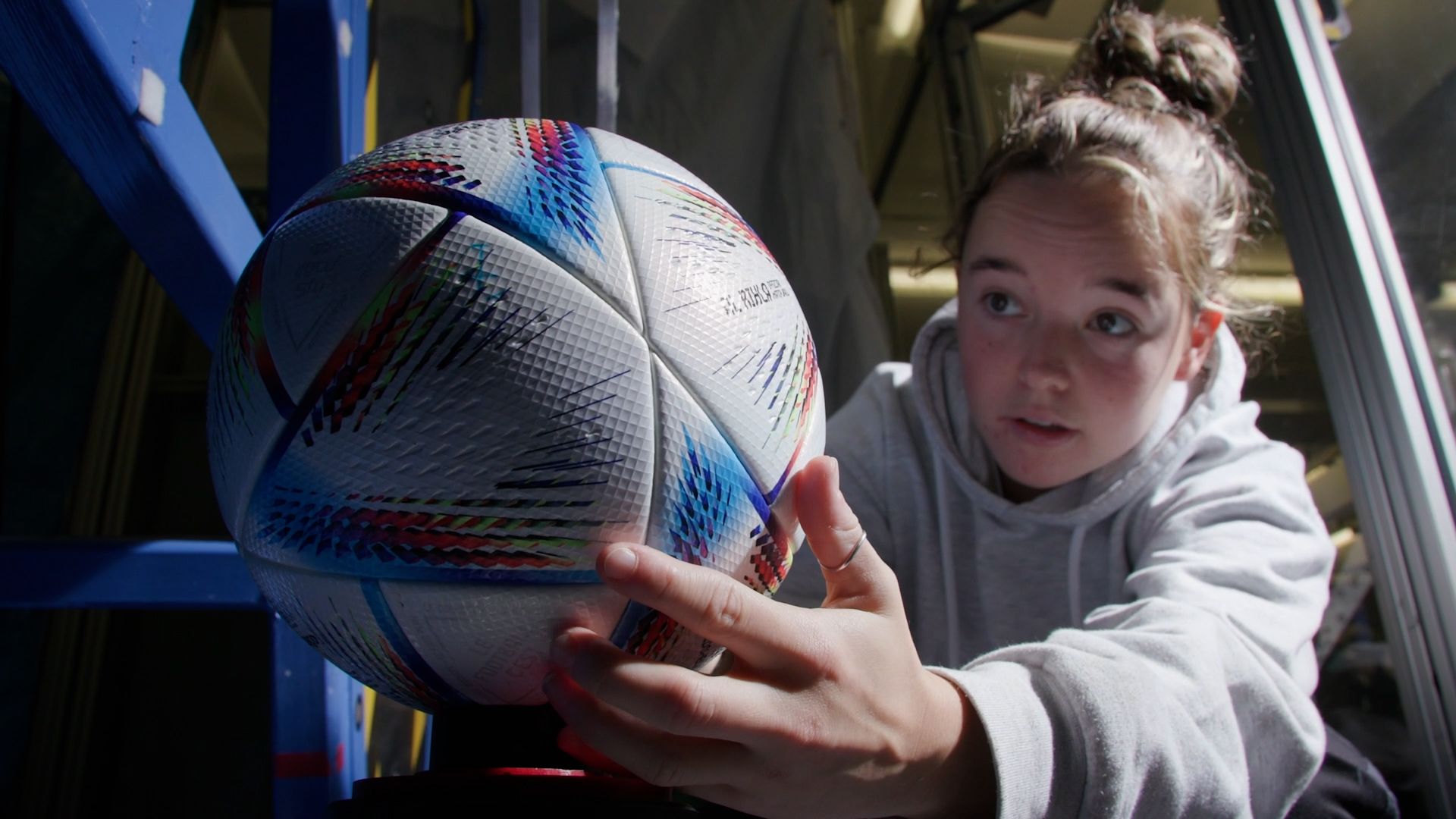
“Our partnership with Loughborough has enabled us to make world-leading advances in our cutting-edge development processes – leading to major impact across footwear, apparel, accessories and gear.”
Established in 1924, adidas is one of the oldest sportswear and equipment manufacturers – and, today, it employs almost 60,000 people worldwide.
A major player in the field, and a leading innovator, its importance within the world of sport is recognised by its many associations with athletes, teams and global events during the past 50 years.
The company has collaborated with Loughborough researchers since 2002, drawing on their first-class capabilities in engineering, aerodynamics, ergonomics and sports science.
The partnership has pulled together multidisciplinary expert teams – led by Professor George Havenith (environmental ergonomics), Professor Andy Harland (sports engineering), and Emeritus Professor Martin Passmore (aerodynamics) – dedicated to making sport safer and more inclusive while supporting talented athletes to achieve world-class success.
As well as ensuring that adidas remains ahead of the curve, the partnership contributes to Loughborough’s well-earned reputation as a world-leading institution for sports-related research and teaching.
Evolving over the years, the partnership and the new knowledge it has generated have steered innovation across a range of sports – spanning cycling, football, running, skiing, swimming and wheelchair racing – and addressed a variety of challenges for product designers.
And, of course, the advances made in clothing and equipment for elite athletes inform the design of products for the general population – ensuring that everyone benefits.
A whole new ball game
adidas has been the exclusive supplier of footballs to the FIFA World Cup since 1970

The University leads the way in advanced game-relevant laboratory analysis, helping adidas to make innovative enhancements to ball balance, surface texture and aerodynamics – influencing every FIFA World Cup football over the past 20 years.
Traditionally, the development of new footballs relied on iterative sampling and physical testing. The potential to innovate – in either design or performance – was limited by the time-consuming and manually intensive process of creating a prototype ball.
Now, every major tournament ball produced by adidas is three-dimensionally moulded and formed, using a thermal bonding process underpinned by Loughborough research. What’s more, the prototype of each official World Cup match ball since 2006 has been rigorously tested here, at Loughborough.
We’ve explored a range of phenomena, including short duration collisions – in other words, what happens to a football when it’s kicked – or comes into contact with another object – and the role of surface texture on ball rebound.
Another of our key advances has been understanding football aerodynamics. Our wind-tunnel testing and tomographic particle image velocimetry has really shone a light on the complex vortex shedding that takes place in the wake of a ball, affecting its flight.
These elements of our work resulted in patented surface features to aid aerodynamic stability, included for the first time in the Jabulani (World Cup 2010 football).
Our partnership’s R&D approach is paying dividends, and adidas footballs are hugely popular. Sales during the past decade or so have been exceptional, with a number of World Cup balls breaking sales records.
Feet first
To support our work in short duration collisions, we developed a bespoke kicking robot. It is designed to strike a football consistently at game-realistic speeds, so that ball performance and consistency can be measured.
Housed in our Sport Technology Institute, the robot has since been replicated in adidas’ test labs in Germany where it is routinely used to innovate football design – and test football boots.
We’ve also mapped the surface strain and shape change of feet during the gait cycle – in other words, as we walk or run – and looked at how foot temperature affects whole body comfort.
Our unique gait mapping work provides invaluable insights not just to adidas but to designers across the sports sector as they strive to create high-performance footwear.
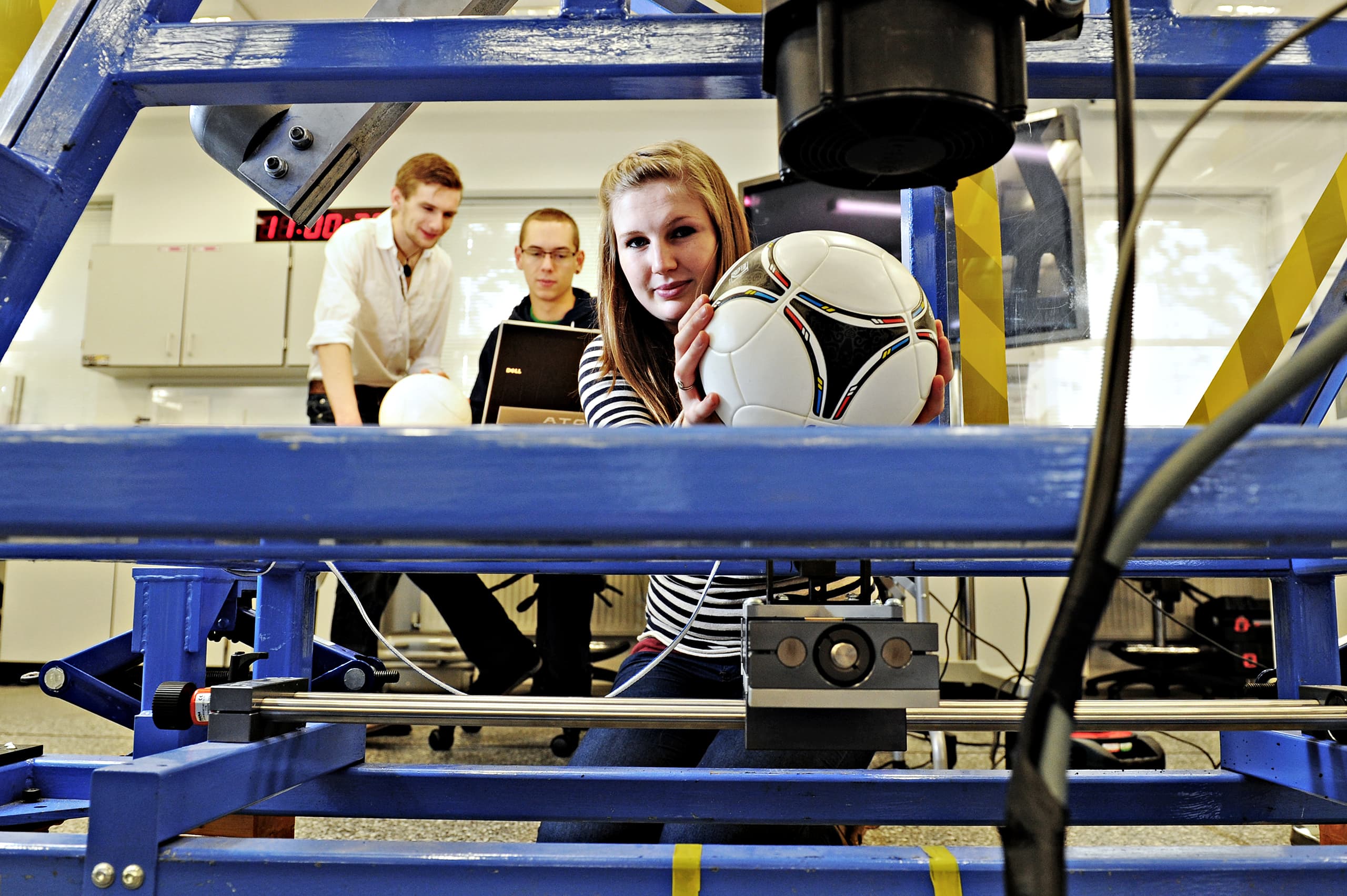
Supporting the women’s game
inclusive engineering and measurement

“For many women, participation in sport is not easy, but we have a vision that inclusive engineering can change this.”
With adidas’s apparel team, we are building up invaluable data about how bodies move, and what the implications might be for support garments – including sports bras.
Human bodies come in a glorious range of shapes and sizes, and change as we grow older. Women’s bodies, particularly so.
A report one year after Sport England launched its This Girl Can campaign in 2015, revealed that increasing numbers of girls and women are inspired to get active. However, many – especially those outside conventional athletic norms – are, on the whole, poorly served by sports clothing brands.

Breast profile measurement, with the journey of a specific point monitored through a sporting motion
Breast profile measurement, with the journey of a specific point monitored through a sporting motion
Our research addresses this shortcoming. Focusing on breast biomechanics – in other words, analysing how breasts move – we are developing a better understanding of how to provide support and dampen motion.
This knowledge underpins the development of support garments that work for a wide range of women – empowering them with the right kit to get active.
Keeping cool (and warm)
under pressure
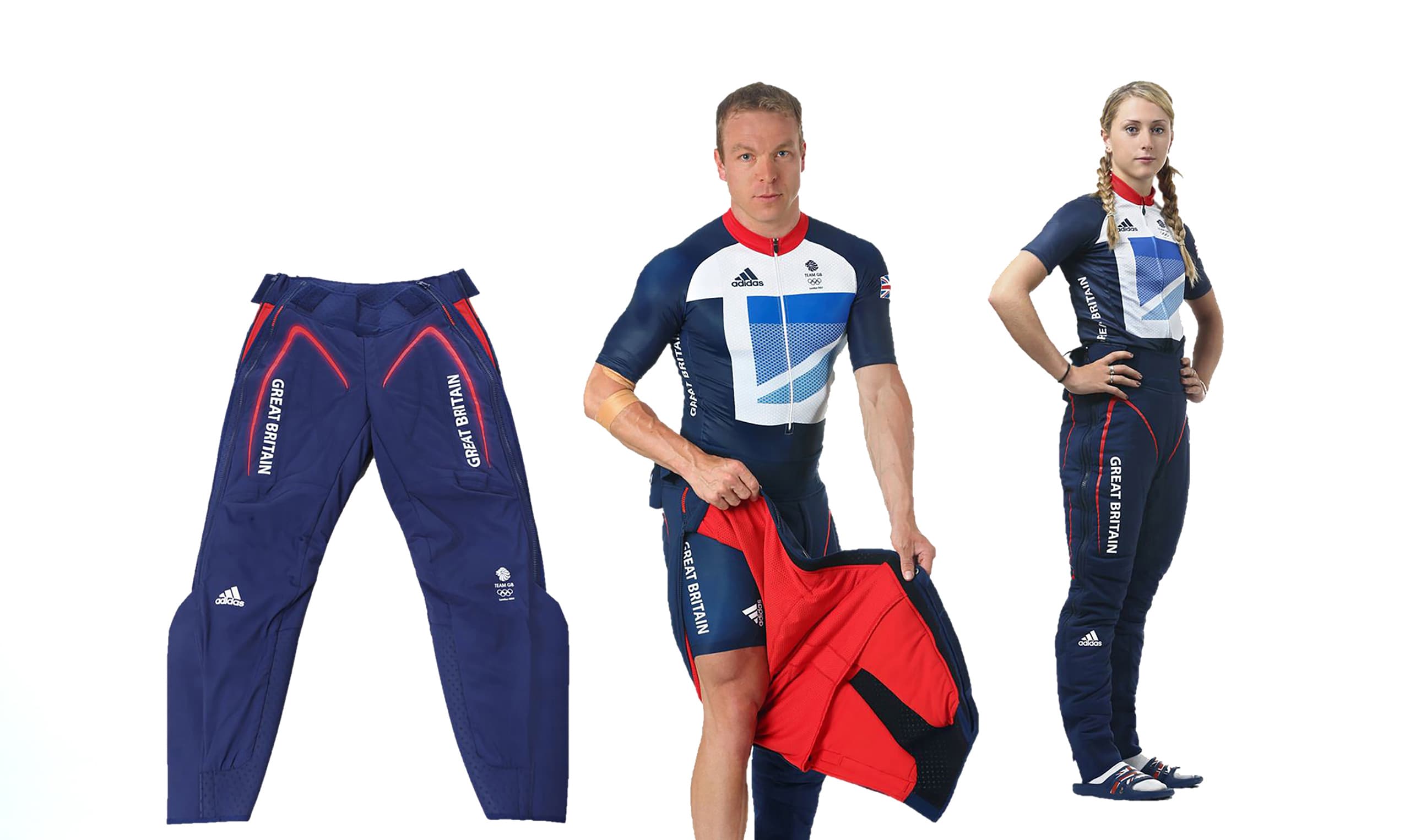
Team GB’s performance in the velodrome during the 2012 Games was phenomenal: a nine-medal haul – seven gold, one silver and one bronze.
An innovative addition to their pre-race warm-up may have had some small part to play in this – the adidas-Loughborough developed adipowerTM trousers.
The battery powered pants keep athletes’ quadricep and hamstring muscles warm in the lead up to a race, providing relevant gains in power and sprint performance.
Athletes – including Victoria Pendleton CBE, Dame Laura Kenny and Sir Chris Hoy – as well as their coaching and support team have all praised the “hot pants”, recognising the important role they play in final race preparations.
Conversely, our research with adidas helps to keep athletes cool as they train and compete.
1 hour sweat rate of a male runner
1 hour sweat rate of a male runner
A combination of physiological processes regulates our body temperature – for example, we sweat when we get too hot. Our Environmental Ergonomics experts have mapped the human form, showing how sweat rates, skin temperature, wetness and temperature sensitivity vary in different parts of our bodies – allowing designers to optimise the clothing for performance, heat loss and comfort.
Their work has also revealed how these natural processes vary across different groups of the population – our age, gender and general health all influence how our bodies respond to activity and the environment we’re in.
With adidas, we developed the first-ever sweat body maps of males and females, informing the company’s sector-leading ClimacoolTM product range, launched in 2002 with running shoes. Climacool adult clothing followed in 2007, and a children’s range has been available since 2016.
Our body mapping research is now accepted as the industry standard across all sports – and guides sportswear designers across a range of brands in deciding how to use specific fabrics and design features to help keep athletes warm in the cold and cool in the heat.
Wins across the sporting arena
and beyond
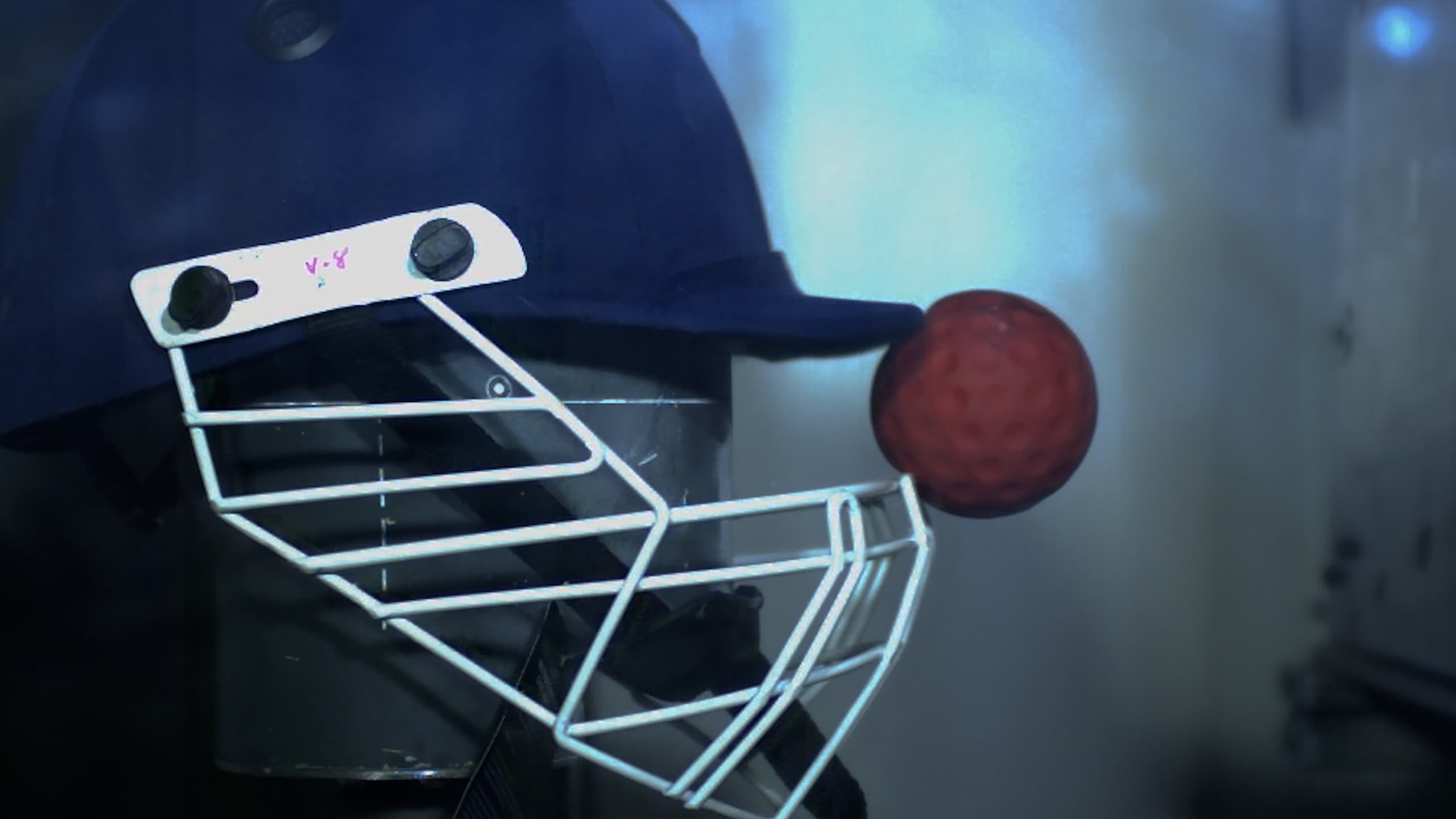
The findings of our partnership’s research have obviously benefited the sporting goods industry enormously, but the knowledge generated has some unexpected applications – some, way beyond the sporting arena.
For example, we’ve applied our knowledge of short duration collisions to sports other than football. The new International Standards governing cricket helmet performance are based on our research. More than 100 conforming helmets have been approved – eliminating facial injuries among helmeted players within the professional game.
Meanwhile, our unique methods developed to study football aerodynamics has some unexpected applications too. Working with Jaguar Land Rover, we have made significant advances in vehicle wake flow measurements – improving vehicle stability, handling, safety and efficiency while reducing drag. Our cutting-edge approach to wake analysis has also been adopted by the Ford Motor Company.
Wake flow simulation of vehicle overtaking lorry
Wake flow simulation of vehicle overtaking lorry
In addition to being the accepted standard within sports, our body mapping research informs the outdoor and protective clothing sectors. We are contributing to a global project to mitigate the impact of climate change on workers’ productivity and comfort in a heating world.
The research also supports the industry-first virtual Human Thermal Model which provides detailed data for populations worldwide. Recent developments include novel work focusing on how temperature impacts different population cohorts – for example the sexes, various age groups as well as people with Multiple Sclerosis and spinal cord injuries.
The right kit for the job
Supporting research of this calibre, of course, requires state-of-the-art facilities and equipment.
Investment from adidas has supported the upgrade of two of the University’s Centres of Excellence – the Environmental Ergonomics Research Centre (EERC) and the Sports Technology Institute (STI) as well as the large-scale wind tunnel in the Aeronautical and Automotive Engineering department which is part of the EPSRC-funded National Wind tunnel facility.
Collectively, these facilities support the development of new product lines for adidas as well as a host of other sports global brands and innovative startups.
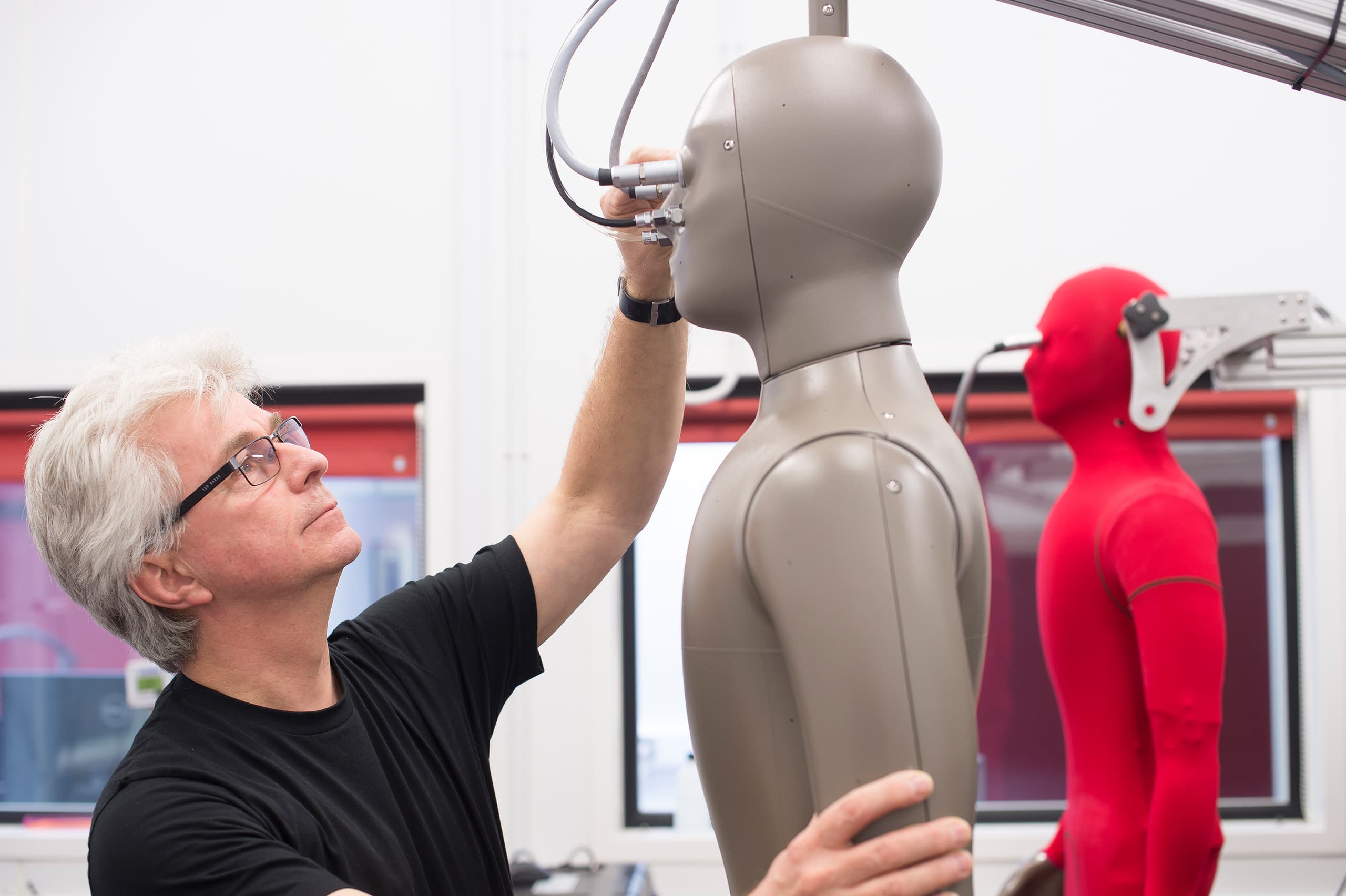
A win-win situation
“adidas has enabled the University to raise the level of its research ambition, creating a world-class environment that continually opens new opportunities to advance original knowledge, drive innovation and enrich our student experience.”
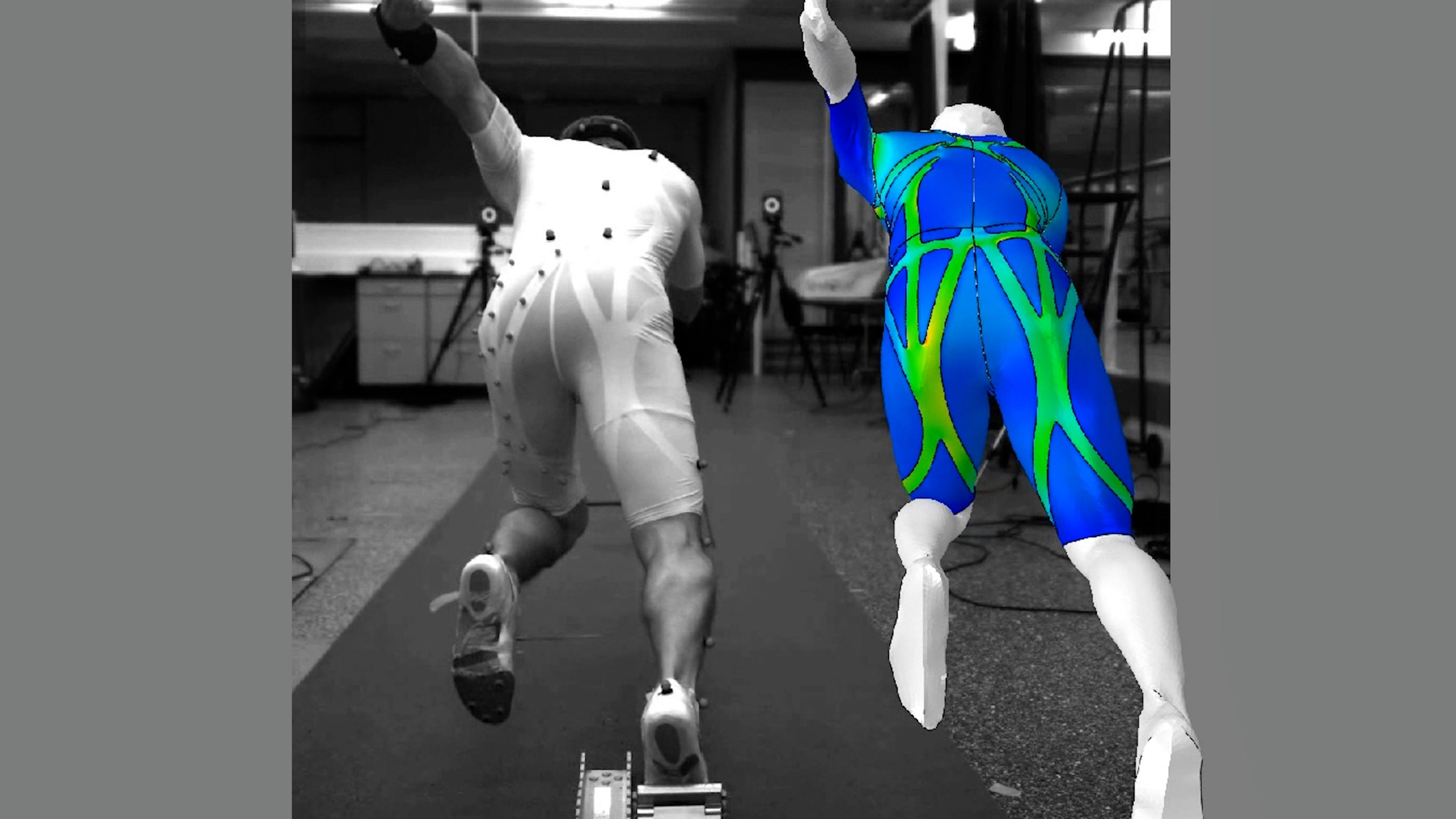
Our research has helped adidas to make great advances in product design. Meanwhile, the partnership has been invaluable to the University, contributing to our position as a world-leading institution for sports research, education and performance.
Since 2002, the company has supported more than 40 projects, resulting in 26 PhD theses and 81 peer reviewed publications – advancing original knowledge, applicable within sport as well as across a variety of other disciplines.
Our partnership PhD programme includes an annual three-month industrial placement for students. Regularly immersing our young researchers within adidas greatly enhances their learning and allows them to disseminate their research within the company.
Students on several our undergraduate programmes benefit in a similar way, welcomed by adidas on internships of up to a year, and we’re proud that many of our graduates are now employed by the company in important product development roles.
Striving for excellence
our ongoing research
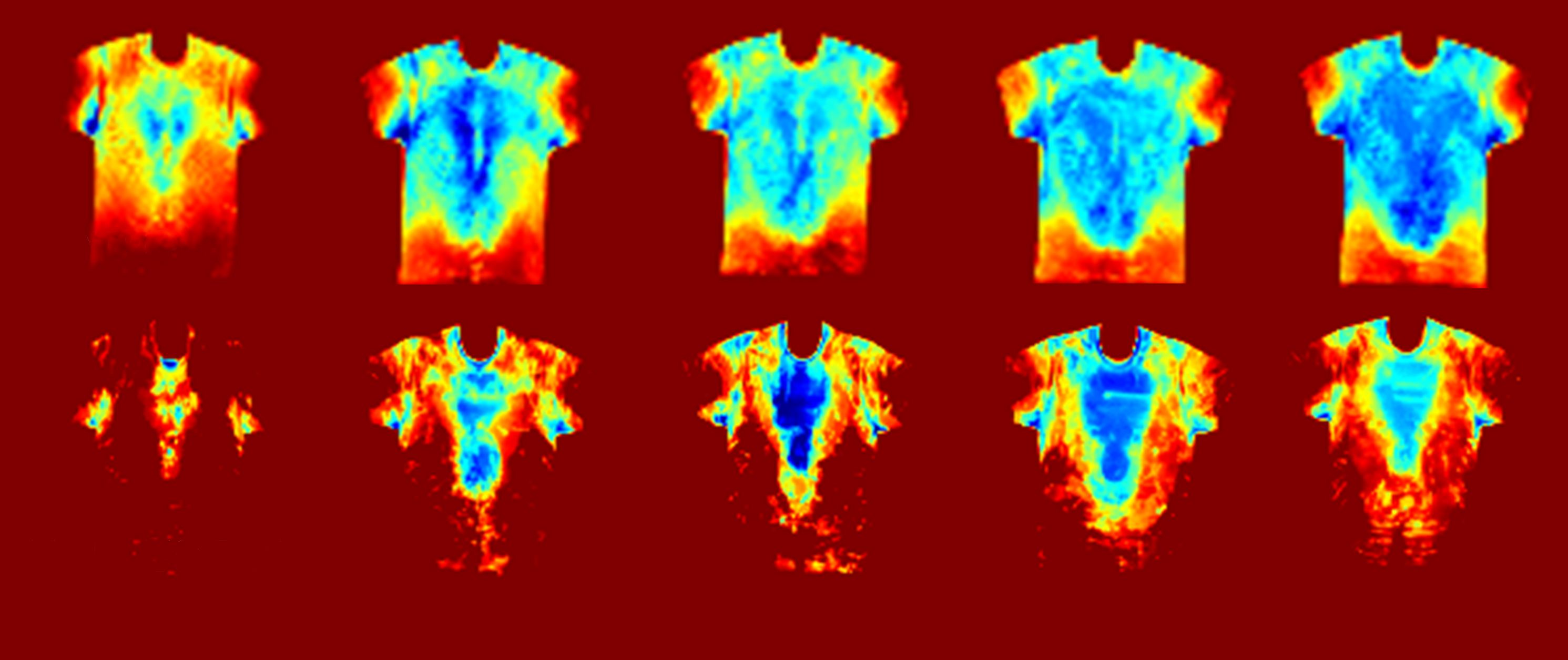
Our partnership with adidas is ongoing with a range of projects underway.
To enhance their performance, we’re currently investigating how football boots interact with both the ball and the ground, and testing of the 2026 World Cup football prototypes are underway.
We’re also working to enhance the sustainability of sportswear. Large-scale trials – involving more than 400 people – are testing garments made from recycled polyester reclaimed from the sea. And, we’re continuing our work on the simulation programme, Virtual Athlete, in a bid to accelerate the product development cycle while reducing its carbon footprint.
Lap of honour
Launched in 2019 as a tribute to Lord Kumar Bhattacharyya, the Royal Academy of Engineering’s Bhattacharyya Award celebrates sustained, strategic university-industry collaborations that benefit society.
We are proud that that University’s outstanding collaborative track record with adidas is recognised by the Academy as the UK’s most exceptional industry–academia partnership.
Together with the University of Manchester and the nuclear decommissioning sector we are joint winners of the 2023 Bhattacharyya Award.
"Our vision for the future is to bring the joy of sport to a wider and more diverse population.
This will come from us continuing collaborations like the one we have with Loughborough which helps us not only to understand the fundamentals that underpin our products but also to expand the diversity of our talent pool."
